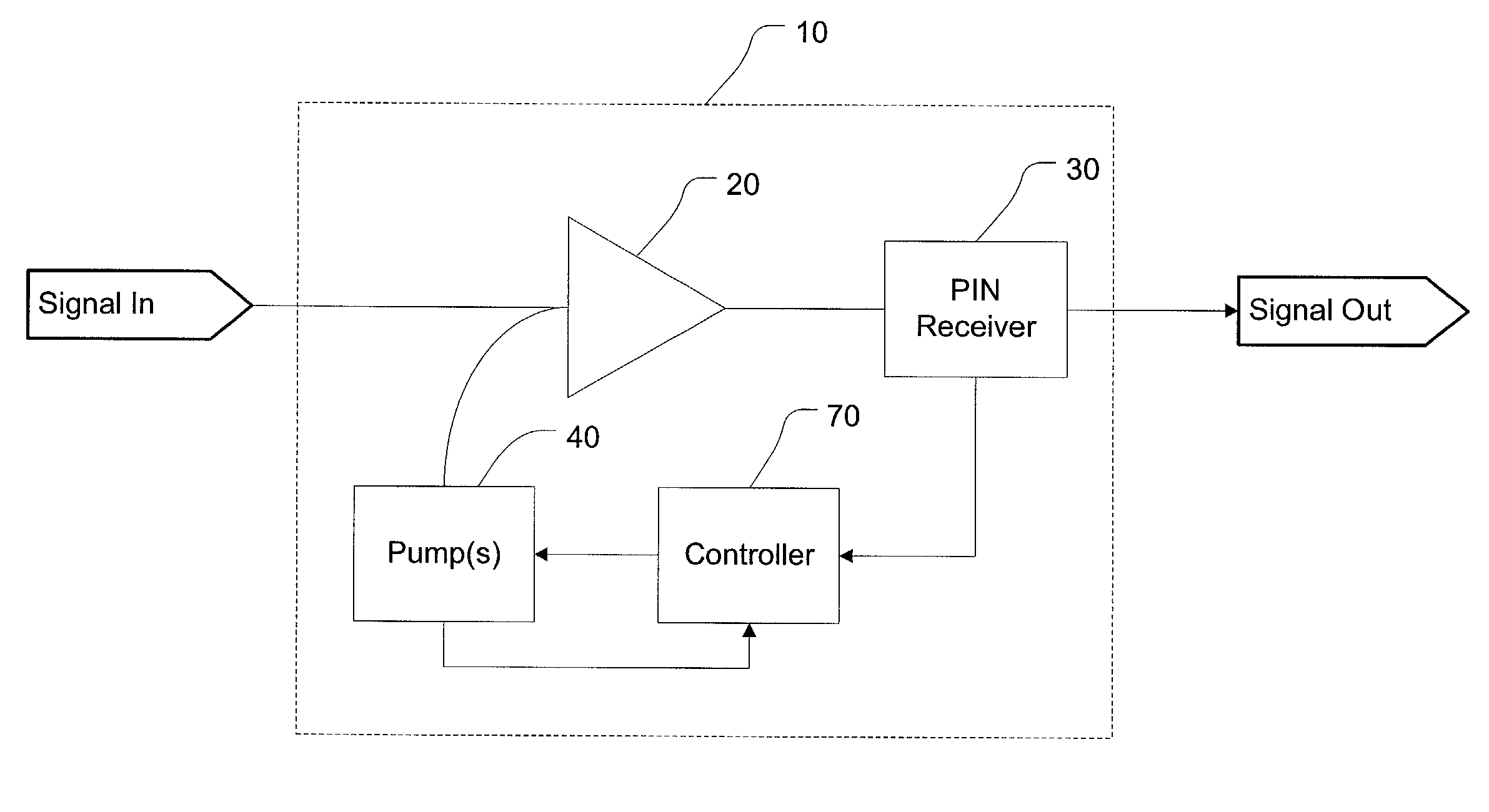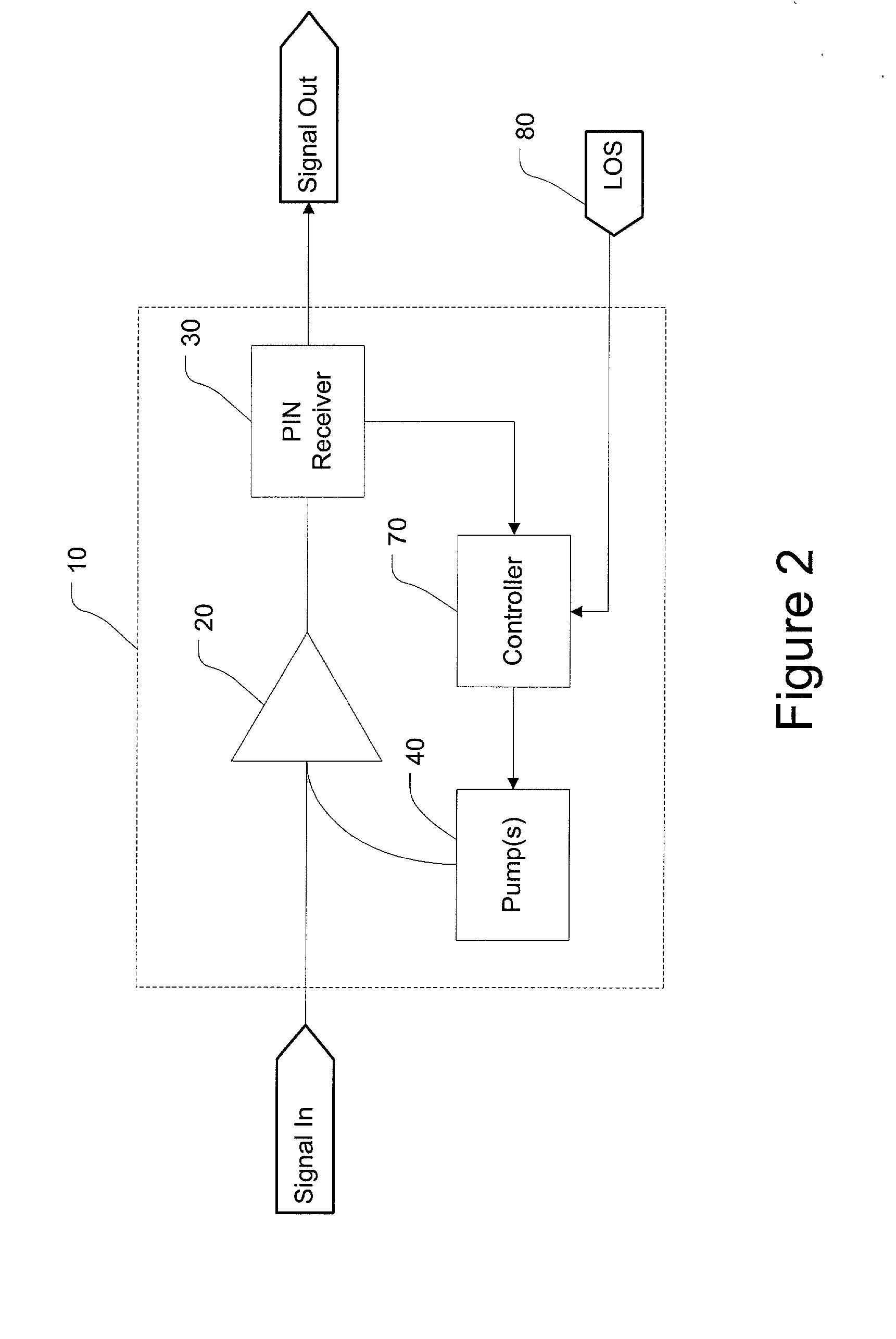Optical pre-amplifier apparatus and method for receiver performing gain control according to los declaration
a preamplifier and receiver technology, applied in the field of optical communication receivers, can solve the problems of increasing the ber (bit error rate) and the inability to increase the ber, and achieve the effect of preventing an increase in the ber and reducing the amount of pump 40 power level changes
- Summary
- Abstract
- Description
- Claims
- Application Information
AI Technical Summary
Benefits of technology
Problems solved by technology
Method used
Image
Examples
Embodiment Construction
[0041] The following detailed description of the invention refers to the accompanying drawings. The same reference numbers in different drawings identify the same or similar elements. Also, the following detailed description does not limit the invention. Instead, the scope of the invention is defined by the appended claims and equivalents thereof.
[0042] The expressions "optically communicates" and "optically coupled" as used herein refer to any connection, coupling, link or the like by which optical signals carried by one optical system element are imparted to the "communicating" or "coupled" element. Such "optically communicating" or "optically coupled" devices are not necessarily directly connected to one another and may be separated by intermediate optical components or devices.
[0043] FIG. 1 illustrates a construction of the inventive pre-amplified receiver node 10 which will also be referred to herein as a receiver node 10.
[0044] The receiver node 10 includes an optical amplifie...
PUM
 Login to View More
Login to View More Abstract
Description
Claims
Application Information
 Login to View More
Login to View More - R&D
- Intellectual Property
- Life Sciences
- Materials
- Tech Scout
- Unparalleled Data Quality
- Higher Quality Content
- 60% Fewer Hallucinations
Browse by: Latest US Patents, China's latest patents, Technical Efficacy Thesaurus, Application Domain, Technology Topic, Popular Technical Reports.
© 2025 PatSnap. All rights reserved.Legal|Privacy policy|Modern Slavery Act Transparency Statement|Sitemap|About US| Contact US: help@patsnap.com



